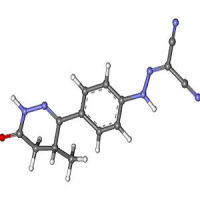Results of a meta-analysis published in PLoS ONE indicate that intracranial pressure (ICP) monitoring decreased the mortality rate of patients with severe traumatic brain injury. Specifically, the mortality of ICP monitored group (hospitalised after 2007) was improved, as well as two-week and six-month mortality rates, according to researchers.
Previous research has shown that patients with severe traumatic brain injury (TBI) were at higher risk of developing intracranial hypertension, especially for those with an abnormal CT scan. A large number of studies also confirmed that outcomes tended to be significantly improved in those TBI patients if their ICP<20 mmHg or in those who responded to ICP lowering treatment.
Nevertheless, even though an extensive literature has been published, the role of invasive ICP monitoring remains conflicting. Most published observational studies did not support the use of ICP monitoring in patients with severe TIB.
Liang Shen, of the Department of Neurosurgery, Huzhou Central Hospital, Huzhou, Zhejiang, China and colleagues conducted a meta-analysis of the published literature to validate the value of ICP monitoring in patients with severe TBI. Their analysis covered 18 eligible studies involving 25,229 patients with severe TBI. The results indicated no significant reduction in the ICP monitored group in mortality (hospitalised before 2007), hospital mortality (hospitalised before 2007), and mortality in randomised controlled trials.
However, the research team found that mortality was reduced in ICP monitored group hospitalised after 2007. The results imply a decreased mortality risk for overall mortality, mortality (hospitalised after 2007), two-week mortality, six-month mortality and hospital mortality (hospitalised after 2007).
"The discrepancy in mortality (pre- and post-2007) probably results from updated TBI guidelines. The indications for ICP monitoring from TBI guidelines lead to a standardised treatment approach and might exert significant improvements," the authors note.
The third edition of the “Guidelines for the Management of Severe Traumatic Brain Injury,” which introduced the “Indications for intracranial pressure monitoring” was updated by the Brain Trauma Foundation (BTF) in 2007. Before 2007, ICP monitoring indication was not unified. ICP monitoring was adopted totally based on the individual clinical experience and relevant suggestions.
In most of the studies included in the meta-analysis, the TBI patients were hospitalised after 2007 and met the indications for ICP monitoring. Thus, Shen's team decided to split the sample at the time point of 2007 based on the changes of guidelines.
According to Shen's team, one limitation of this analysis is the lack of consistency in mortality data – which included ICU mortality, hospital mortality, and two-week and six-month mortality. "While we pooled all these data together for the meta-analysis, a more detailed classification should be considered in future analyses," the authors write. "Moreover, the data on mortality do not contain the long-term functional outcome, thus, the effects of ICP monitoring may lack of comprehensive assessment."
Source: PLoS ONE
Image Credit: Pixabay
Latest Articles
ICP, Mortality, Severe Traumatic Brain Injury, intracranial pressure monitoring
Results of a meta-analysis published in PLoS ONE indicate that intracranial pressure (ICP) monitoring decreased the mortality rate of patients with severe traumatic brain injury.



























